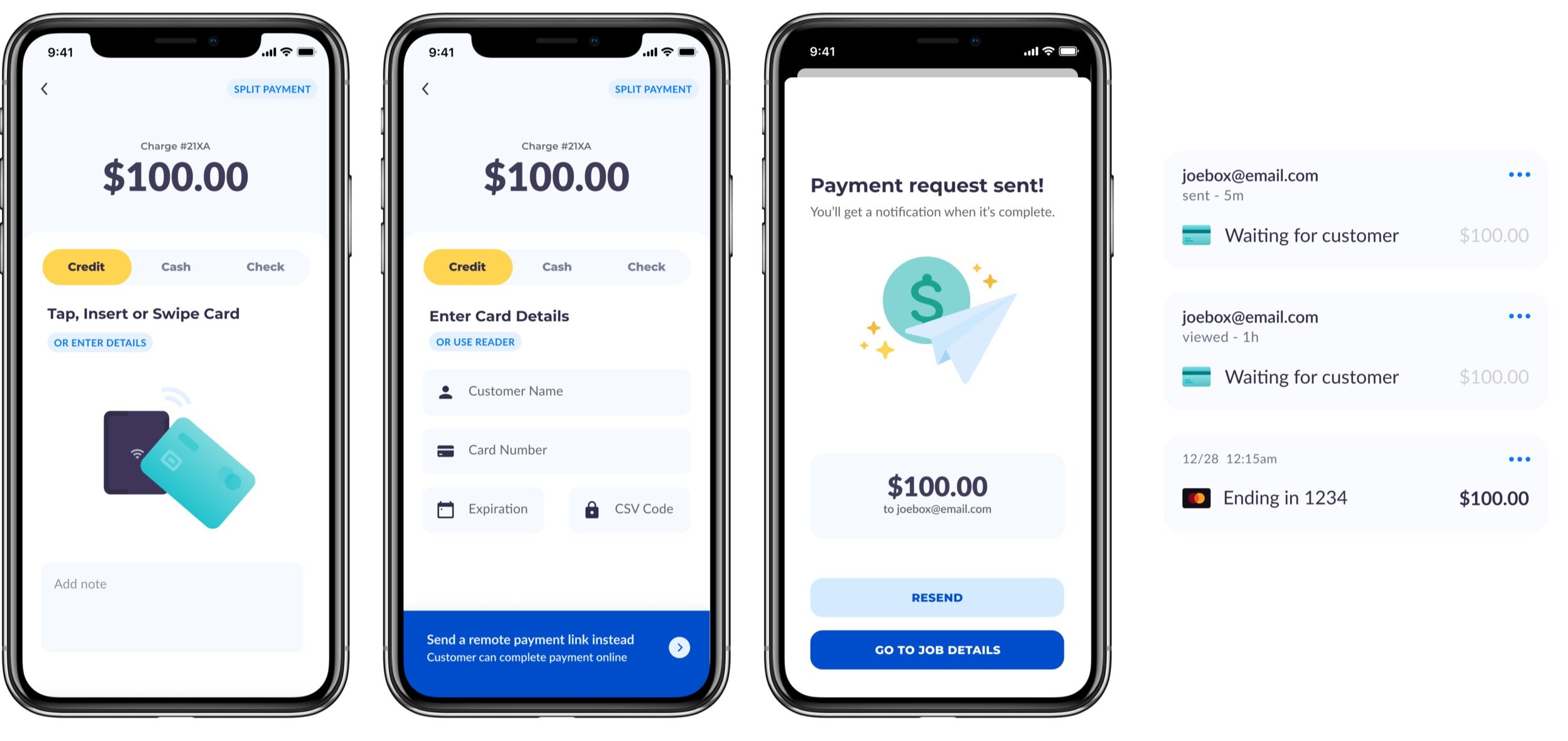
User Verification • A flexible user verification system that leverages context to build trust
Nobody wants to give up their social security number upfront to an app they just downloaded. I designed a user verification system that prompts users to enter their identity information based on the feature they're using. This makes users more aware of how their information is being used and helps build trust as they use the app.
This design allows users to use all features of the app, gently warns of upcoming gating, and provides a progressive, non-linear path to full verification.

Customer Payment Request • A more trustworthy way to charge remote cardholders
Home services are not always paid on-site (e.g. a service for a tenant may be paid by the property manager). The default alternative is a card payment over the phone, which is less secure and feels less trustworthy. I designed a way to send customers a payment request link so the cardholder can complete payment online. Bonus, this can be used in times of the pandemic so the user does not need to collect the customer’s signature (and possible germs) on their own phone.

Estimates • Lightweight customer approval
An MVP estimate feature that bucks the idea that a job must go through estimates>invoice>payment. The payment flow of a home service varies greatly depending on the industry and service type -- a locksmith may charge a flat rate for a specific service, while an HVAC technician may have a consultation and provide an estimate that a customer must approve before the job. Instead of forcing a linear flow, I branched the existing payment flow so that the user can either create an estimate or directly collect payment.


